It’s March 2019 and Old Town Road by Lil Nas X fills the restaurant. Servers are rushing back and forth, slamming down plates, and almost crashing into each other to take orders. There’s an impatient line outside waiting to eat, and the servers are sweating.
Finally, we get our plate of food. The cheapest thing we could find on the strip, a plate of pasta bolognese that was 18 euros. Lost in thought among the cloud of English, I suddenly hear Alicia. ¨What do you think of Puerto Banus, Ambar?¨ Woah, I had seriously forgotten I was in Spain.
By the time I could process the shock of this radically different dining experience, the bill had already landed on my table. What?! I hadn’t even asked for it yet.
I had grown to appreciate and love the laid-back service at Spanish restaurants and the lengthy lunch chats with friends that could last two to three hours, but we were in a very touristy place. No doubt the cultural expectations for lightning-fast service from the mostly British and German travelers caused the locals to curb their own local customs–and you know that’s NOT what Travel Culture is about.
Food in Spain is at the center of bonds and traditions, and you’d be missing out on a key part of Spanish traditions if you sped up your dining experience. I could tell you so much about what to eat in Spain, and promise I will in another blog post, but today we’re diving into the culture of dining in Spain.
The Culture of Eating in Spain
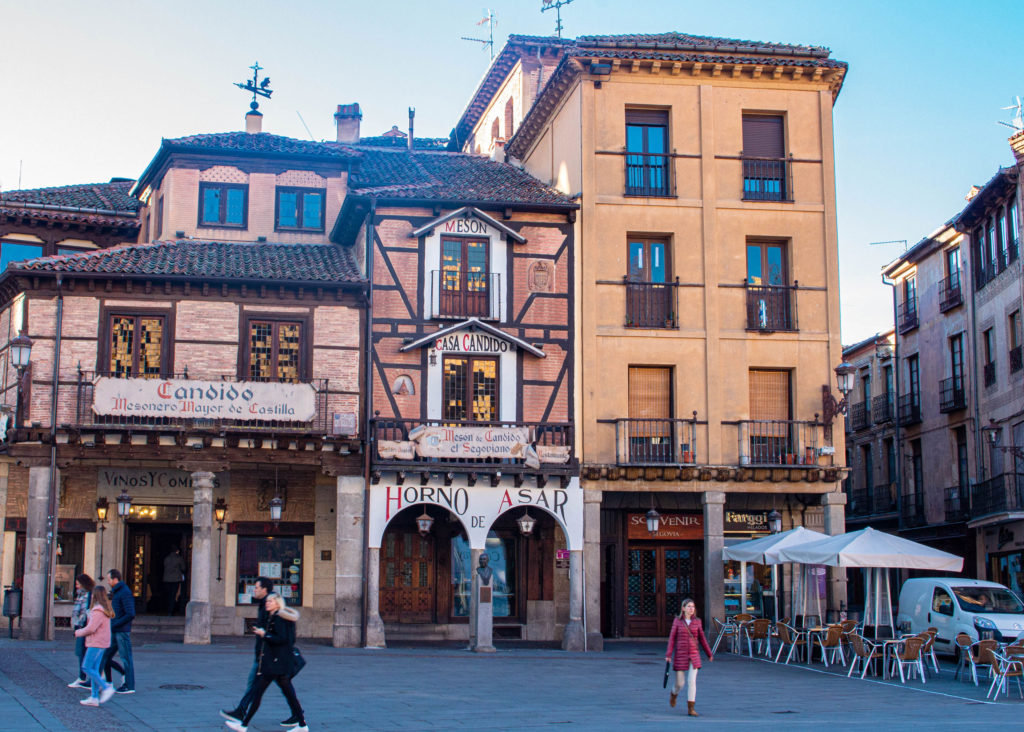
When I first started working in Spain, I was co-teaching a bilingual classical culture class. I always taught them about US culture, and the students loved telling me about Spain.
One day, I told them about dining in the United States and how the server passes by your table every five minutes, has a little chat with you, fills up your drink the moment it’s empty, and you never have to ask for something twice. Any less, and they’d be risking their tip. “What?!” They looked at me shocked, “But, wouldn’t it be annoying if someone is always interrupting your conversation?”
This, y’all, was the day I realized Spain and the US looked at dining differently. Here are some of my favorite eating lessons I learned from my sixteen-year old Spanish students:

#1 - Eating in Spain is just as much about company as it is about satisfying your hunger
It’s very rare to have major meals like lunch or dinner by yourself. (Breakfast is okay though.)
True story: One time I was sitting by myself for dinner and a pair of elderly Spanish women in Basque Country invited me to eat with them because they didn’t want me to eat alone.
Meals are times to gather with family and friends and have rowdy conversations about any subject under the sun. This tradition of chatting after a meal is so important, it even has a proper name ´sobremesa´ (over table). Long after the plates are cleared, the sobremesa will continue over drinks, coffee, or dessert. It can last several hours! (I once had lunch for five hours, four of which was just the sobremesa.)

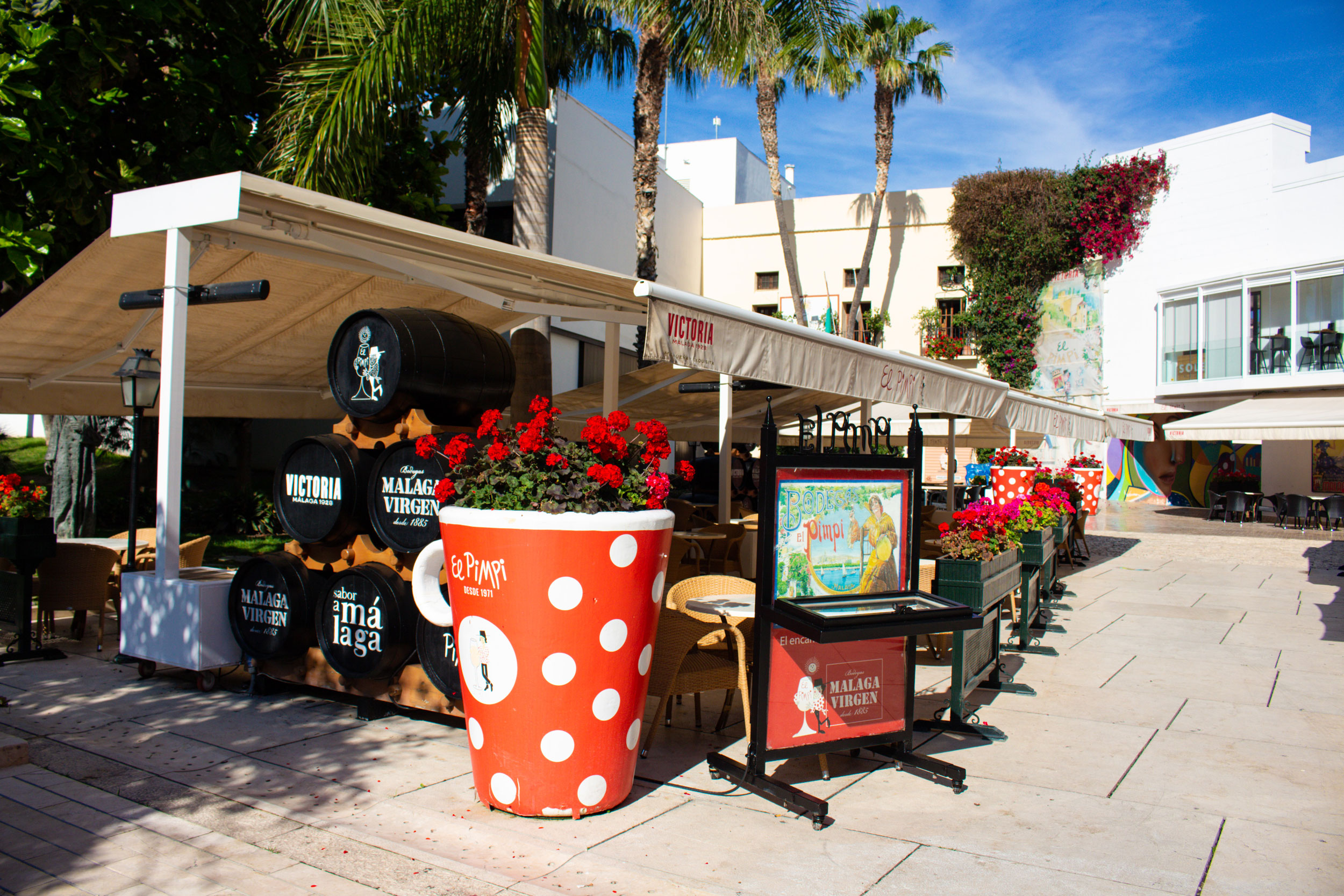

#2 - Meal times are another way to slow down and get in the groove of the relaxed Spanish mindset
This next point sort of spills into number three, but mealtimes in Spain are sacred. In the US it’s quite common to have lunch as you continue working in front of a screen, but mealtimes in Spain are more about enjoyment. Even if you don’t have company, it’s a moment to pause, have some me-time, and be present in your day and environment.
During my first trip to Spain, I was traveling alone and went to have lunch by myself in Madrid. My server sat down many times to chat with me and keep me company. When I asked for the bill right after finishing my food, he said, ¨Ok, but don’t rush. Enjoy your wine, enjoy the sun, enjoy the view. You’re in Spain.¨
#3 - You don’t work where you eat

#4 - Food and drinks are consumed at a table
After my class one day I walked out with the teacher and told her I could use a coffee before our next class. So we went to the cafe in front of the school. We walked in and she sat at a table. I went up to the bar to order. We looked at each other confused, ¨Oh I was just going to take it to go.¨ She looked at me like I was crazy and said, ¨Ah, yes I’ve seen this in movies. Americans walking around NYC while drinking coffee. We don’t really do that here. Come sit down to enjoy your coffee.¨
(ENJOY my coffee? Interesting concept. I was just going to consume it for energy.)
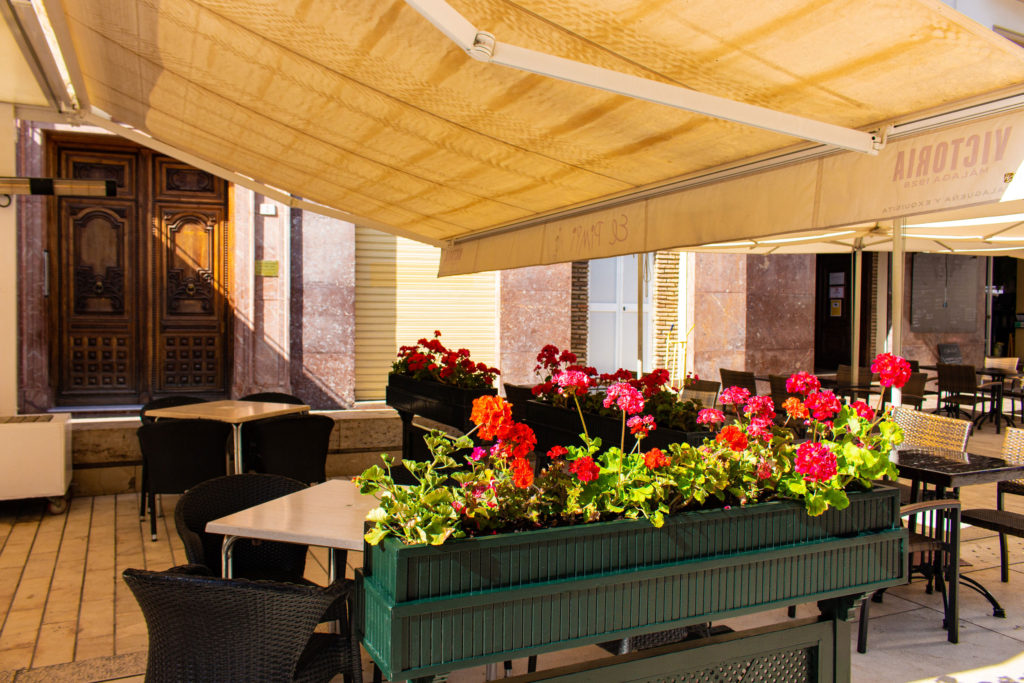
Pro Tips about dining in Spain
Switching your mindset about the service is key, but it can still be a bit of a jarring experience depending on where you are coming from and which part of Spain you visit. One and a half years later, and I still have not mastered the art of flagging down my waiter if the restaurant is super busy. Here are some tips:
- Be aware that the service might take longer than where you are coming from, but that’s okay cause you know you are also taking this time to relax.
- You may have to ask for things several times. Even the check–believe it or not.
- If you are in a hurry to leave, and you’ve asked for your check, and it just won’t come or you can’t find your server, it’s okay to get up and pay at the bar.
- In the words of my Madrilenian server, don’t rush. Enjoy your wine. Enjoy your company. Enjoy the view. You’re in Spain.
Following Mealtimes in Spain is Crucial

I learned a lot where I first lived in Spain, not just from those sixteen-year olds but from the other locals as well. One day I went from cafe to cafe to cafe looking for churros at 2 PM. (If you don’t know what churros are, they are long fried pieces of dough that are light and airy. In Spain, you dip them into a cup of dense hot chocolate. YUM.)
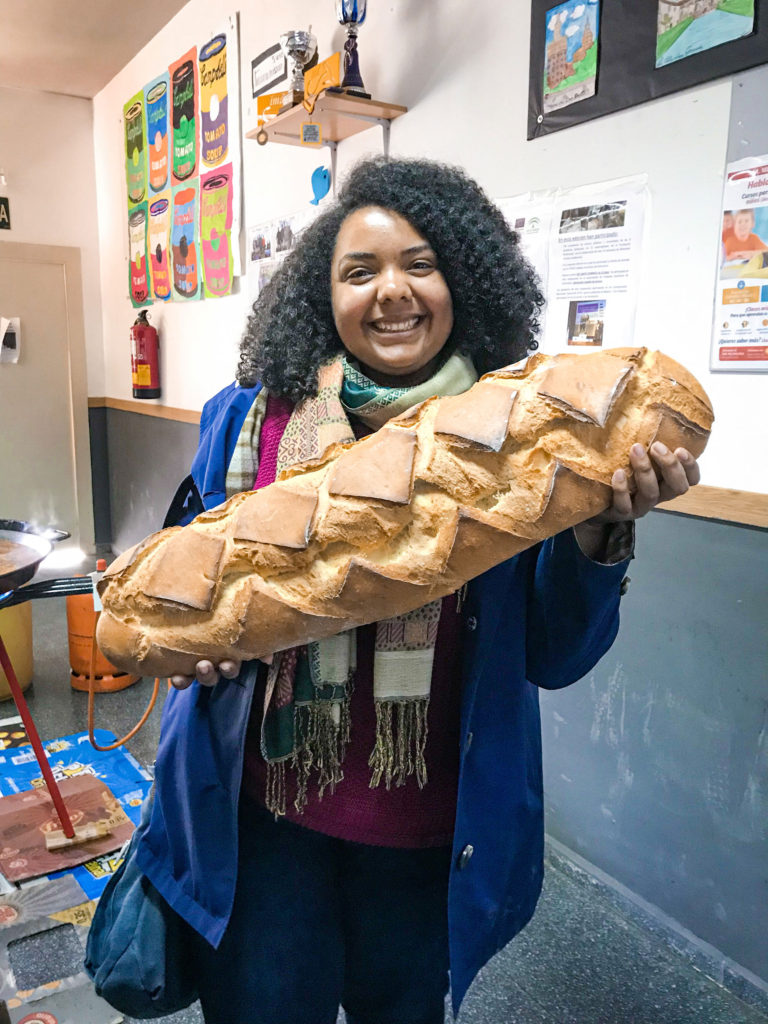
After trying at the fifth place that day, one man behind the bar kindly broke it to me ‘Cariño, no son horas de churros.’ (Sweetie, this isn’t the time to eat churros.)
It’s true, (fellow Americans listen up), in other countries there are certain foods you eat only at certain times of the day. There might be some wiggle room in the biggest cities like Madrid or Barcelona, but if you try to eat Spanish food outside of mealtimes, your food options will be limited, and you’ll end up overpaying for food in tourist-traps or eating reheated bar food. Both are an absolute no! So take notes.
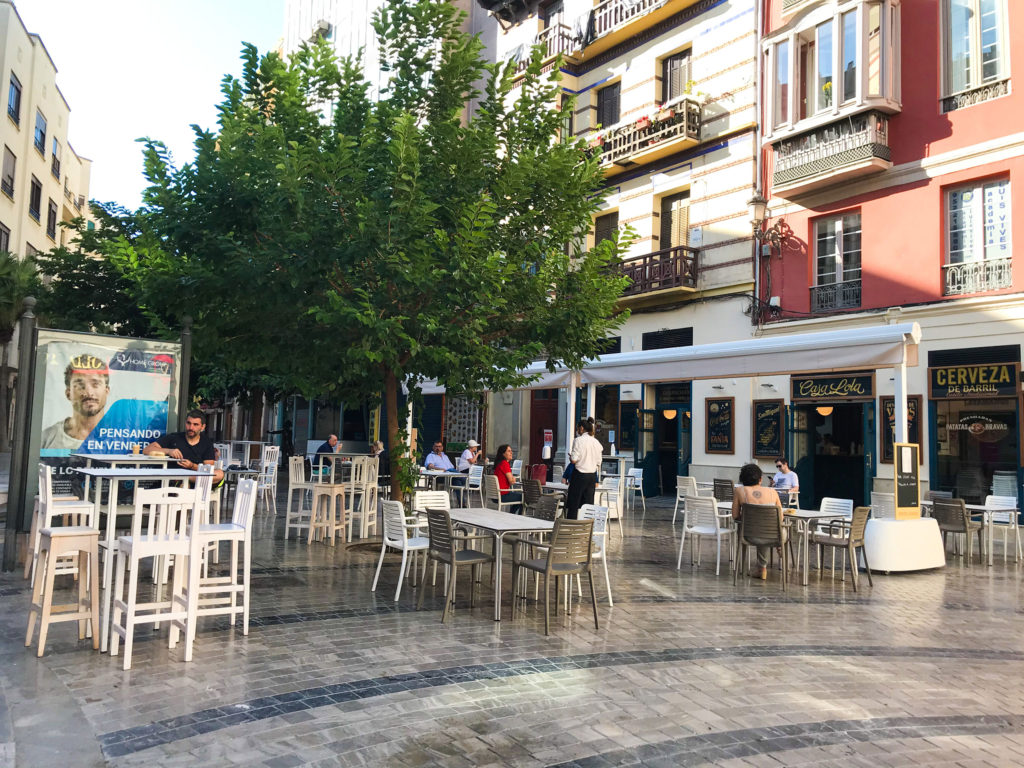
'Desayuno' (Breakfast) - 7-9 AM
In Spain, this is the smallest meal of the day and typically consists of fresh bakery bread or pastries with coffee or juice. Another common breakfast drink is colacao, a chocolate milk beverage I recommend trying. (There’s a huge colacao vs. nesquik debate in Spain, but colacao is uniquely Spanish so it’s worth trying if you love chocolate).

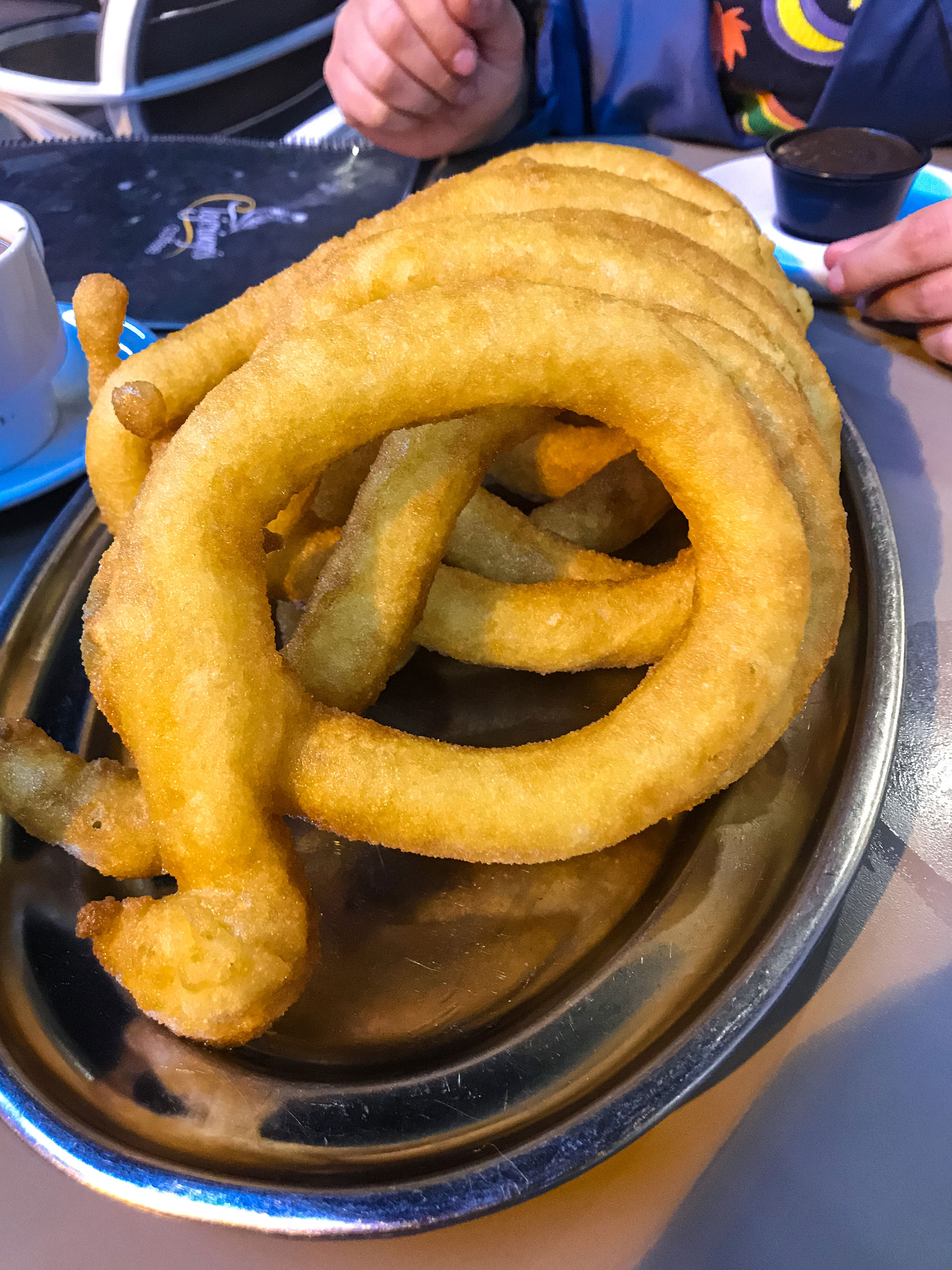
'Almuerzo' (Second-Breakfast) - 10:30 AM-12 PM
In Latin American Spanish this word means lunch, but in Spain it’s something more like a second breakfast. If you work, this is a nice morning break to get together with colleagues for a chat over coffee. This meal is also light. Locals may eat fruit, churros, sandwiches on half-baguettes, or an open toasted baguette with toppings.
Some popular toppings are:
- Tomato (grated or sliced)
- Ham (Serrano or York)
- Olive Oil
- Marmalade (the peach one is my favorite)
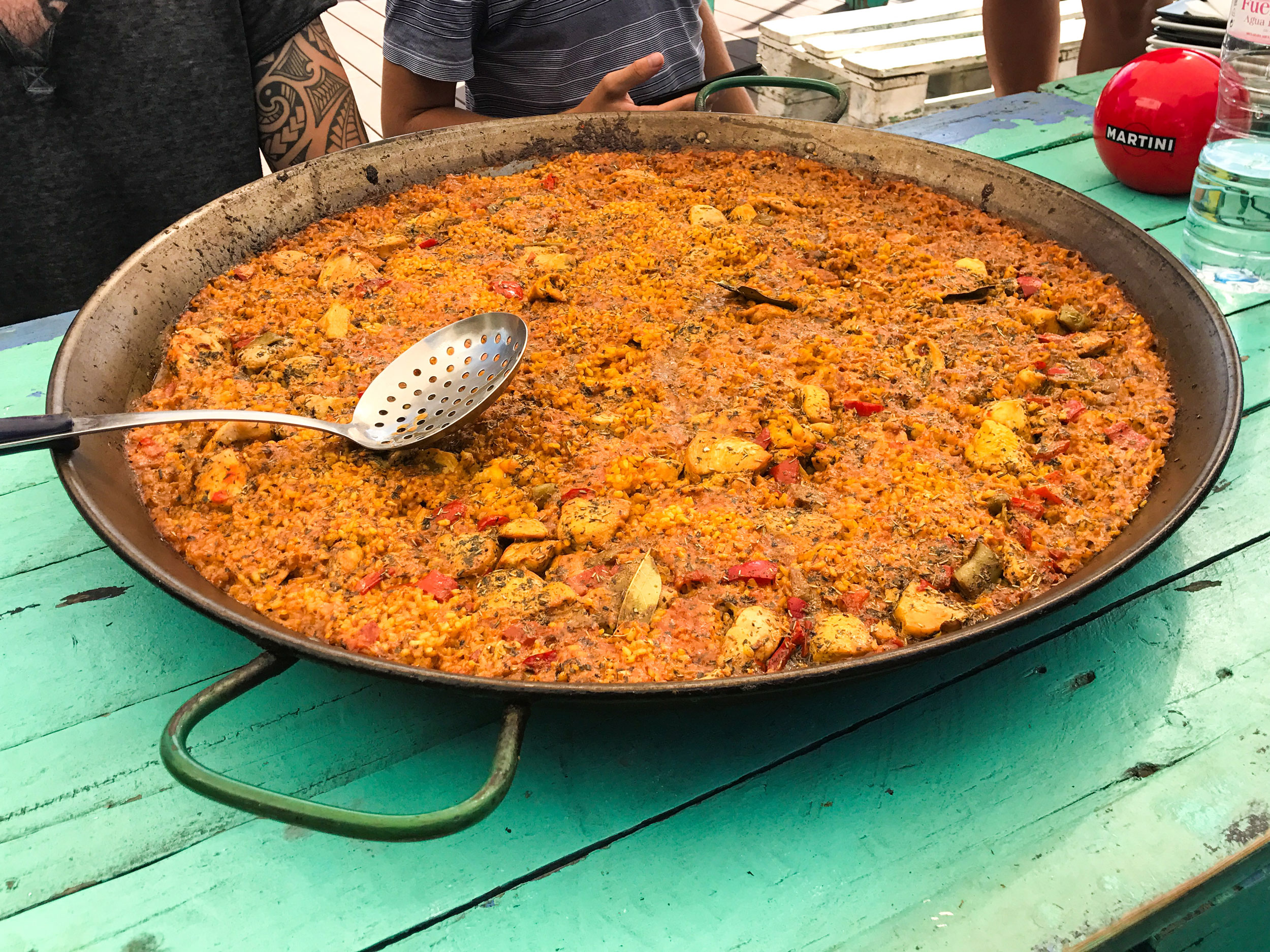
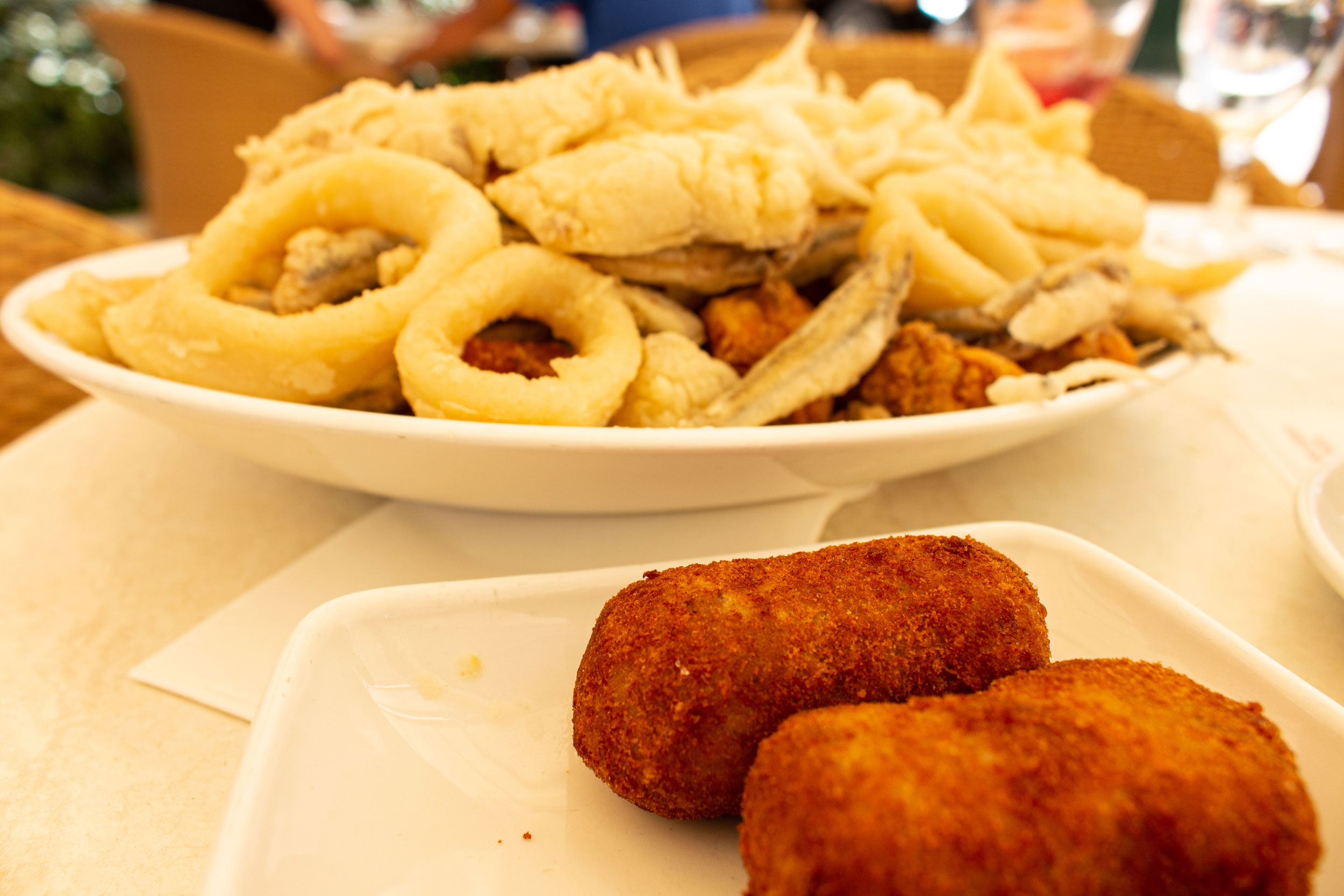
La Comida - The Most Important Meal of the Day in Spain 2-4 PM
Y’all this is so important, and you really don’t want to mess up here. The biggest meal of the day in Spain starts at 2 PM and in general most local places will stop serving food around 4 PM. The sobremesa at la comida can sometimes go so long it spills into dinner time.
Pro Tips to Take Full Advantage of La Comida
- Find a local restaurant with a ‘menu del dia’ (menu of the day). It can include an appetizer, an entree, a side salad, bread, dessert, coffee, and a drink for 6-15 euros depending on the region.
- Eat a big hearty meal like the Spanish do because there will not be any substantial food after 4 PM until 8:30 PM unless you visit a restaurant catering to tourists or a chain.
- If you want to try the famous Spanish paella, this is the time to do it! Paella is a heavy dish so, naturally, locals would eat it at their biggest meal of the day and not later.
- Fill up on some of the delicious fish or pork dishes, these are very common protein sources in Spain.
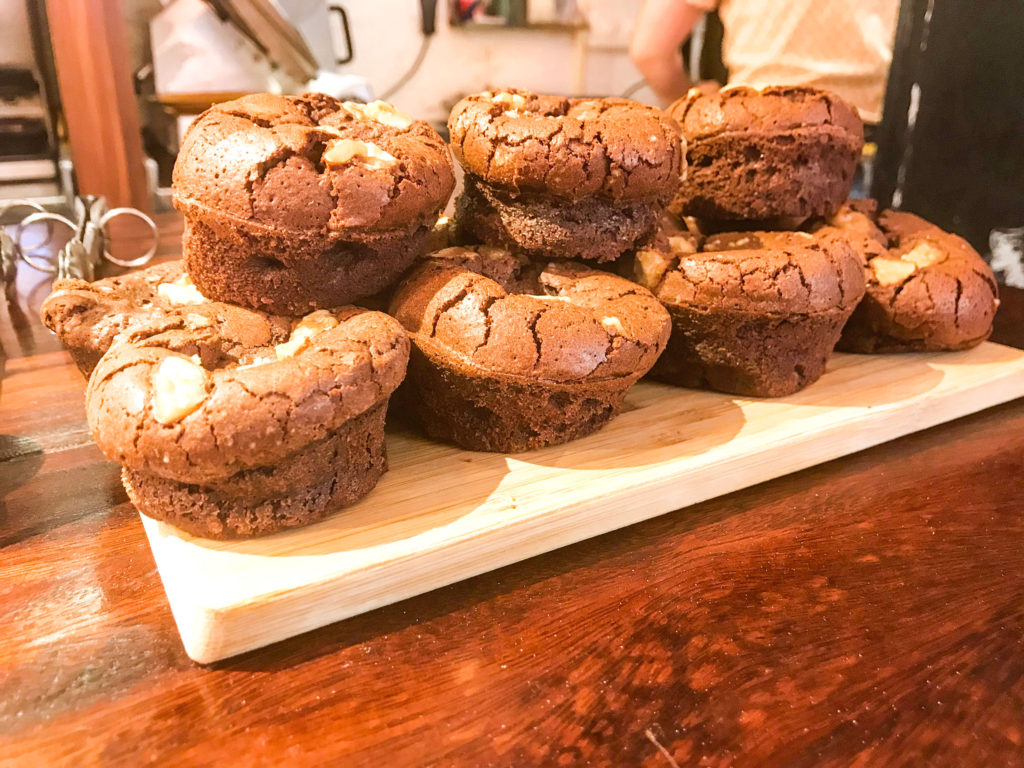
Merienda - 5-8 PM
This is a perfect time for a sweet treat like churros, ice cream, or a pastry. You could also opt for savory bites like olives, cured meats and cheeses, or another small sandwich. Another popular merienda option is fruit.
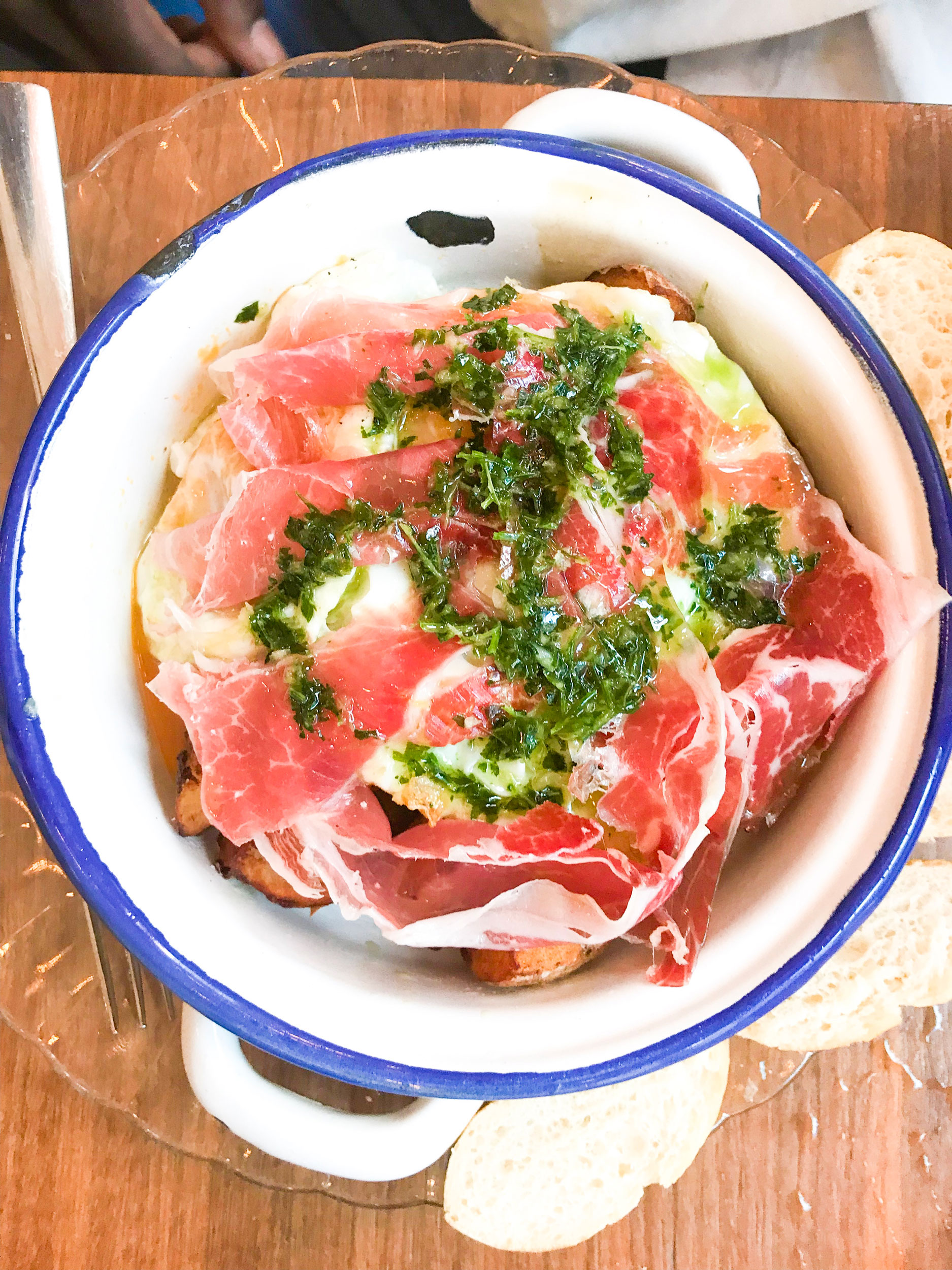


Cena (Dinner) - 9 PM-1 AM
This is when the famous Spanish tapa comes out to play. A tapa is like a small portion of Spanish food, and friends or families will gather to go tapeando. You can go from bar to bar ordering a drink and a tapa at each bar. You can also order rounds of tapas at one bar, savoring from the variety while you enjoy rowdy conversations with friends.
Note: having a big Spanish style lunch is important here or the tapas may not be filling.
Through working and living with Spanish people, I have learned just how important food is in their culture, so I hope this blog helps you enjoy the amazing traditions of eating in Spain when you come to visit. Stay tuned for a future blog on WHAT to eat in Spain.



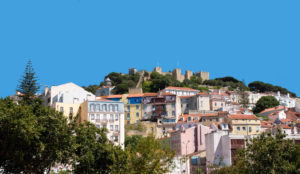

I wish I knew about this blog when I first got to Spain; I nearly starved in my first week because I kept missing meal times!
Keep it up, much love xx
Hahaha, oh my yes! I feel that! Getting used to Spanish mealtimes was probably one of the hardest adjustments when I moved here. I just had to force myself to my eat like the Spanish so I wasn’t hungry at work all the time.
Love this! You not only made me miss Spain, but miss you! Thanks for the mouth watering travel tips, I can’t wait to use it as a reference.
Yes, we have to replan your return to La Costa del Sol. I’m sure you are missed in Estepona. Can’t wait to see you again.
Damn reading this got me hungry instantly! Good advice for everyone whether you’re in Spain or not. Enjoy your food and enjoy the company by taking a step back to breathe and not rush.
Yes, I think it’s the secret to their good health over all. Just a general relaxed mind set and focus on enjoying life especially in the simple everyday activities like eating and company.
Genial! Me encantó este reportaje tan amigable. He aprendido un montón. Ya conocí y disfruté a Madrid, pero confieso que no fui muy observadora… me perdí mucho de sus costumbres… pero me enriquecí a través de ustedes. Preciosas fotografías con tanto colorido, demasiado provocativos esos platos de comida, tapas, churros, etc. Y sobretodo me encantó el reiterado mensaje de “Disfrutar” cada momento. Este Blog es muy completo. Felicitaciones Maite y Ambar, sin duda hacen al mundo mejor!
Uy, me encanta Madrid. Una ciudad con tremenda hona. Me alegra mucho que aprendiste mas de las costumbres Españolas atreves del blog. Espero que te ayuda a disfrutar mas de tu proximo viaje a España!
Pingback: itemprop="name">10 Hilarious and Surprising Culture Shocks in Spain to Know Now - Travel Culture